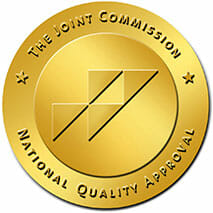With the rise of “mommy wine culture” and sayings like “rose all day,” it’s no wonder that alcohol use disorder in women increases. Excessive drinking due to stress surrounding the recent pandemic has affected both women and men, but women bear the brunt of the damage. Women are more susceptible to physical dangers caused by alcohol in addition to psychological consequences. By understanding how alcohol affects women’s unique biological composition, more women can protect themselves from the severe impacts of alcohol.
The Prevalence of Alcohol Use in Women
Although statistics have historically shown men as the gender to partake in increased drinking, women are quickly catching. The percentage of women who engage in moderate to heavy alcohol use has risen significantly. Between 2002 and 2013, the prevalence of alcohol use disorder in women in the United States increased by 83.7%.1 Woman is even starting to drink earlier than their counterparts—adolescent girls as young as 12 years old are binge-drinking more frequently than boys.2
Harmful Effects of Alcohol on Women
Alcohol can have detrimental effects on anyone’s body but appear to affect women more severely. Alcohol-related hospital admissions and diagnoses among women aged 45-64 years increased by 90% between 1993 and 2010 compared to a 30% rise of men in the same age group.1 Woman are at an elevated risk for developing the following alcohol-related damage:
Neurologic damage
Chronic or excessive alcohol use results in damage to the brain in both men and women, but this destruction may occur more quickly in women. Women could also be more vulnerable to alcohol-related blackouts.3
Liver damage
Women are more susceptible to developing alcohol-related hepatitis. This liver disease can grow more quickly and after consuming less alcohol than men.3 If left untreated, hepatitis can soon progress into cirrhosis or permanent scarring and dysfunction of the liver.
Breast cancer
Alcohol use can increase one’s risk of breast cancer. Compared to women who do not drink at all, women who partake in 1 alcoholic beverage each day have a 5 to 9% increased risk of breast cancer.3
Factors Contributing to the Dangers of Alcohol Misuse
The big question that remains is what unique factors put women at a higher risk for consequences. Several biological differences could contribute to the effects alcohol has on women. There is evidence supporting women’s higher estrogen levels, lower muscle mass, and lower water weight are potentially significant factors.4 These factors can contribute to a woman rapidly feeling the effects of alcohol and even prompting alcohol cravings.5
Estrogen levels in women fluctuate due to menstrual cycles, changes in hormones during pregnancy and postpartum or menopause. Increased estrogen in the system improves one’s mood, which is why alcohol can make women feel good (as alcohol increases blood estrogen level). Data shows that women with declining estrogen levels crave alcohol and its pleasurable effects.5 Withdrawals from alcohol can be even more severe and uncomfortable if a woman is in a naturally declining phase of their cycle or are perimenopausal. Women may turn to alcohol to lessen these withdrawal symptoms and fall into a cycle of addiction or alcohol use disorder.
An additional factor that plays a role in the danger alcohol can pose is the initial reasoning and purpose behind consuming it. Whereas many men drink alcohol to enhance positive emotions, women are more likely to use alcohol to cope with stress, trauma, anxiety, or negative emotions. This element may contribute to addiction rates.6
Pandemic-Related Increase in Alcohol Use Disorder in Women
The Coronavirus pandemic has negatively impacted the mental health of people around the world. Unfortunately, many have turned to alcohol to cope. In a study focused on the pandemic, women reported that their top reason for increased drinking was higher stress levels.7 Studies show that women are more likely to engage in excessive drinking due to increased stress.8 Although healthy habits to address anxiety or stress are great; societal influences have almost glamorized using alcohol as a self-care tool throughout the pandemic. This cultural shift could be preventing those who are suffering from alcohol use disorder from seeking the help they need.
Receive Help for Alcohol Use Disorder at Silver Sands Recovery
If you or a loved one are a woman struggling with alcohol use disorder, it’s important to remember that alcohol may pose a greater danger to your body and mind. Enlisting the help of an experienced professional will allow you to break the chains of both physical and psychological dependencies successfully. Contact Silver Sands Recovery to begin healing today.
Sources:
[1]: https://www.ncbi.nlm.nih.gov/pmc/articles/PMC4755348/
[2]: https://www.niaaa.nih.gov/publications/brochures-and-fact-sheets/underage-drinking
[3]: https://www.niaaa.nih.gov/publications/brochures-and-fact-sheets/women-and-alcohol
[4]: https://pubmed.ncbi.nlm.nih.gov/9754520/
[5]: https://pubmed.ncbi.nlm.nih.gov/32250129/
[6]: https://arcr.niaaa.nih.gov/women-and-alcohol/role-stress-trauma-and-negative-affect-alcohol-misuse-and-alcohol-use-disorder
[7]: https://www.ncbi.nlm.nih.gov/pmc/articles/PMC7320671/
[8]: https://www.ncbi.nlm.nih.gov/pmc/articles/PMC6502688/
About the author:

Lisa Waknin is the Founder and Director of Silver Sands Recovery, located in Prescott, Arizona. Lisa started Silver Sands Recovery after immersing herself in the addiction treatment world for several years to figure out what could be done differently to help her daughter and others like her to overcome addiction and stay sober. She believes in a hands-on treatment approach, which includes taking someone out of their environment, providing a 90-day program in a structured environment. During treatment, clients not only recover physically but also learn to live their life again. Lisa is a sought-after expert speaker for recovery support groups, charities, schools, communities, and companies wanting to educate themselves on the explosion of opiate and heroin abuse in our country and the best way to understand, treat, and beat it.





